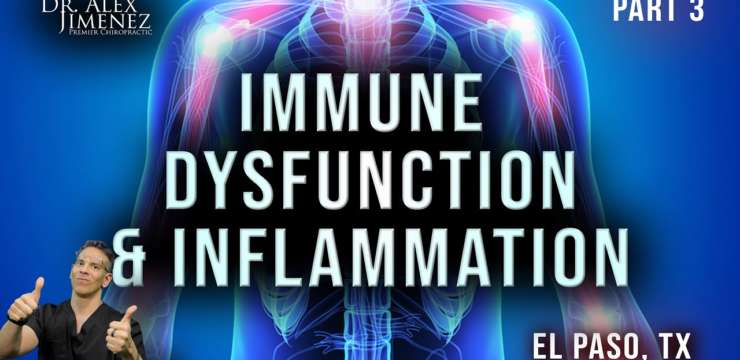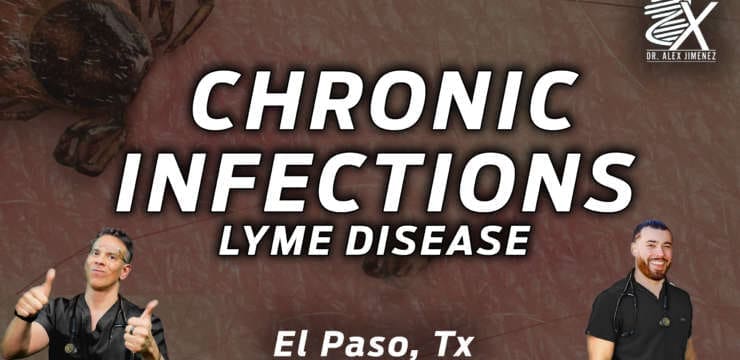
Discover the effects of PTSD related to severe whiplash after auto accidents. Find valuable insights and support resources.
Table of Contents
The Complex Interplay Between Whiplash and PTSD: A Comprehensive Guide
Introduction: The Hidden Impact of Whiplash
Picture this: you’re cruising down the highway, singing along to your favorite tune, when—BAM!—a car rear-ends you. Your head snaps back, then forward, and suddenly, your neck feels like it’s auditioning for a role in a bad action movie. This is whiplash, a common injury from motor vehicle accidents (MVAs) that’s more than just a pain in the neck. While the physical symptoms like stiffness and headaches are no laughing matter, whiplash can also pack a psychological punch, potentially leading to Post-Traumatic Stress Disorder (PTSD). In this comprehensive guide, we’ll explore the clinical rationale behind this connection, dive into the role of injuries in whiplash, and spotlight the work of Dr. Alexander Jimenez, a leading chiropractor and nurse practitioner in El Paso, Texas, who helps accident victims navigate both medical and legal challenges. So, buckle up (safely, of course) for a deep dive into this complex topic, with a sprinkle of humor to keep things light—because nobody needs more stress after a car crash!
Section 1: Understanding Whiplash
What is Whiplash?
Whiplash is a neck injury caused by a rapid, forceful back-and-forth movement of the head, much like the crack of a whip. It’s most commonly associated with rear-end car collisions, but it can also occur in sports accidents, falls, or even amusement park rides (yes, that roller coaster might be more than just thrilling). The sudden motion strains the neck’s muscles, ligaments, and tendons, leading to a range of symptoms that can make daily life feel like a scene from a slow-motion disaster flick.
Symptoms of Whiplash
Whiplash symptoms can be as varied as the toppings on a pizza. Common physical symptoms include:
- Neck pain and stiffness: The hallmark of whiplash, making it hard to turn your head without wincing.
- Headaches: Often starting at the base of the skull, these can feel like a marching band in your head.
- Dizziness: A spinning sensation that’s not as fun as a merry-go-round.
- Fatigue: Feeling like you’ve run a marathon, even if you’ve just been sitting in traffic.
- Shoulder or arm pain: Pain that radiates like an unwelcome guest.
- Numbness or tingling: Pins and needles that make you question if your arm is still attached.
- Blurred vision or tinnitus: Because whiplash loves to throw in some sensory curveballs.
But here’s where it gets tricky: Whiplash doesn’t just mess with your body. The trauma of an MVA can leave you rattled, leading to psychological symptoms like anxiety, depression, or even PTSD. Imagine trying to drive again while your brain replays the crash like a bad movie trailer—that’s the kind of mental toll we’re talking about.
Whiplash by the Numbers
Whiplash is no rare cameo in the world of injuries. According to the National Safety Council, over 2 million whiplash cases occur annually in the U.S. alone. While many people recover within weeks, up to 50% may experience chronic symptoms lasting months or years, turning their lives into a prolonged episode of “Pain: The Series.” These statistics underscore the need for early intervention to prevent long-term issues.
References
- National Safety Council. (n.d.). Injury facts: Motor vehicle injuries. Retrieved from NSC Injury Facts
Section 2: PTSD and Its Connection to Whiplash
What is PTSD?
Post-Traumatic Stress Disorder (PTSD) is like the uninvited guest who crashes your mental party after a traumatic event. It can develop after experiencing or witnessing something life-threatening, like a severe car accident. Symptoms include:
- Flashbacks and nightmares: Reliving the crash like it’s on a loop in your mind.
- Avoidance: Steering clear of anything that reminds you of the accident, like driving or even certain roads.
- Negative mood changes: Feeling hopeless or detached, as if your emotions took a wrong turn.
- Hyperarousal: Being jumpy or constantly on edge, like you’re waiting for the next plot twist.
PTSD can make everyday activities feel like navigating a minefield, especially when paired with the physical pain of whiplash.
The Whiplash-PTSD Link
Research suggests that severe whiplash and PTSD are more connected than peanut butter and jelly. A study published in the journal PAIN found that 25.7% of whiplash patients developed PTSD, which worsened their physical symptoms (Pedler & Sterling, 2013). The study examined 331 patients within three months of an MVA, assessing neck pain, disability, and psychological health. Those with moderate to severe PTSD and sensory hypersensitivity (an increased sensitivity to pain) reported significantly worse neck pain and disability compared to those without PTSD. Interestingly, 43.5% of patients had no PTSD or hypersensitivity but still faced pain and disability, showing that whiplash is a complex beast.
The physical trauma of whiplash, particularly when it leads to chronic pain, can amplify psychological distress. Imagine your neck screaming in pain every time you turn your head, while your brain replays the crash—it’s like a double feature of misery. This interplay suggests that treating only the physical symptoms might leave the psychological ones to fester, like ignoring a leaky pipe until your house is a swimming pool.
Cervical Instability: The Hidden Culprit
One reason whiplash can lead to PTSD is cervical instability caused by capsular ligament laxity. During an MVA, the ligaments in the neck can stretch or tear, leading to instability that causes chronic pain, vertigo, tinnitus, and dizziness. These symptoms can mimic post-concussion syndrome or whiplash-associated disorder (WAD), adding to the physical and emotional burden. Research indicates that whiplash can cause up to a 275% increase in ligament elongation, significantly increasing the risk of chronic issues (Hackett et al., 1962; Kafetz, 1963). This instability can make patients feel like their body is betraying them, fueling anxiety and potentially triggering PTSD.
References
- Pedler, A., & Sterling, M. (2013). Patients with chronic whiplash can be subgrouped on the basis of symptoms of sensory hypersensitivity and posttraumatic stress. PAIN, 154(9), 1628-1633. PAIN Journal
- Hackett, G. S., Hemwall, G. A., & Montgomery, G. A. (1962). Ligament and tendon relaxation treated by prolotherapy. Charles C Thomas.
- Kafetz, K. (1963). Prolotherapy for chronic pain. Journal of Orthopaedic Medicine, 25(1), 21-28.
Section 3: Clinical Rationale for Treating Whiplash-Associated PTSD
Why Both Physical and Psychological Treatment Matter
Treating whiplash without addressing PTSD is like trying to fix a car with a flat tire by polishing the hood—it’s not going to get you far. The chronic pain and physical limitations from whiplash can exacerbate PTSD symptoms, while the psychological stress of PTSD can make physical pain feel worse. It’s a vicious cycle, like a dog chasing its tail, only less cute. Research suggests that a multidisciplinary approach, combining physical therapies like chiropractic care with psychological interventions like cognitive behavioral therapy (CBT), is key to breaking this cycle (ChiroNexus).
Treatment Options
Here’s a rundown of treatment strategies that can help:
- Chiropractic Care: Manual adjustments and spinal decompression can relieve pressure on nerves and discs, reducing pain and improving mobility. Studies show that chiropractic care can help 93% of whiplash patients improve (ChiroNexus).
- Physical Therapy: Exercises to strengthen neck muscles and improve range of motion can prevent chronic issues.
- Cognitive Behavioral Therapy (CBT): CBT helps patients manage PTSD symptoms by reframing negative thoughts and reducing avoidance behaviors.
- Pain Management: Medications or prolotherapy (injections to strengthen ligaments) can address chronic pain, with studies showing 85% of patients with ligament injuries report reduced pain after prolotherapy (Hackett et al., 1962; Kafetz, 1963).
- Lifestyle Changes: Stress-reduction techniques, such as mindfulness or yoga, can complement medical treatments.
Early intervention is critical. Addressing physical symptoms promptly can prevent chronic pain, which may reduce the likelihood of PTSD developing or worsening. Similarly, tackling psychological symptoms early can improve overall recovery, making you feel less like you’re stuck in a bad sequel.
Dr. Alexander Jimenez’s Approach
In El Paso, Dr. Alexander Jimenez is a beacon of hope for patients with whiplash. With over 25 years of experience, he combines chiropractic techniques with functional medicine to create personalized treatment plans (Injury Medical Clinic). His approach includes spinal decompression to relieve disc pressure and manual adjustments to correct misalignments, which are particularly effective for whiplash. While specific insights on PTSD from Dr. Jimenez are limited, his focus on holistic care suggests he recognizes the importance of addressing both physical and emotional health.
References
- Pedler, A., & Sterling, M. (2013). Patients with chronic whiplash can be subgrouped on the basis of symptoms of sensory hypersensitivity and posttraumatic stress. PAIN, 154(9), 1628-1633. PAIN Journal
- Hackett, G. S., Hemwall, G. A., & Montgomery, G. A. (1962). Ligament and tendon relaxation treated by prolotherapy. Charles C Thomas.
- Kafetz, K. (1963). Prolotherapy for chronic pain. Journal of Orthopaedic Medicine, 25(1), 21-28.
- ChiroNexus. (2013). PTSD linked to severe whiplash. ChiroNexus
Understanding Long-Lasting Injuries- Video
Section 4: The Role of Advanced Diagnostics in Whiplash Treatment
Why Diagnostics Matter
Imagine trying to solve a puzzle with half the pieces missing—that’s what treating whiplash without proper diagnostics is like. Advanced imaging techniques, such as MRI and CT scans, can reveal the extent of damage to ligaments, discs, and nerves, thereby guiding treatment plans. For personal injury cases, these diagnostics are also crucial for accurately documenting injuries and ensuring that victims receive fair compensation.
Dr. Jimenez’s Expertise
Dr. Jimenez excels in using advanced diagnostics to assess whiplash injuries. His dual licensure as a chiropractor and nurse practitioner allows him to interpret imaging results with a keen eye, linking physical findings to clinical symptoms (Injury Medical Clinic). For example, he might use an MRI to identify ligament laxity or a CT scan to detect subtle fractures, providing a clear picture of the injury’s impact. This precision is crucial in personal injury cases, where accurate documentation can significantly impact the outcome of a legal claim.
Dual-Scope Procedures
Dr. Jimenez’s use of dual-scope procedures—combining clinical assessments with diagnostic imaging—sets him apart. By correlating physical symptoms with imaging findings, he creates a comprehensive injury profile that supports both treatment and legal documentation. It’s like having a translator who speaks both medical and legal fluently, ensuring nothing gets lost in translation.
References
- Injury Medical & Chiropractic Clinic. (n.d.). Dr. Alex Jimenez: Pioneering integrative care. Injury Medical Clinic
Section 5: Personal Injury Cases in El Paso
The Landscape of Personal Injury
El Paso, a bustling city on the Texas-Mexico border, sees its fair share of MVAs, leading to numerous personal injury cases. These cases often involve complex injuries like whiplash, where physical and psychological damages intertwine. Navigating these cases requires a healthcare provider who can provide both top-notch medical care and robust legal documentation.
Dr. Jimenez’s Role
Dr. Jimenez is a cornerstone of personal injury care in El Paso. His clinic, Injury Medical & Chiropractic Clinic, specializes in treating severe pain, whiplash, and other MVA-related injuries (Dr. Jimenez’s Website). His ability to act as a liaison between medical services and legal teams is invaluable. By providing detailed reports backed by advanced diagnostics, he ensures that patients’ injuries are accurately represented in court, helping them secure the compensation they deserve.
Why El Paso Needs Experts Like Dr. Jimenez
In a city with high traffic and frequent accidents, having a practitioner like Dr. Jimenez is like having a superhero on speed dial. His 34 years of experience and 5.0 patient rating reflect his dedication to providing high-quality care (Medical News Today). Whether it’s adjusting a misaligned spine or documenting a ligament tear, Dr. Jimenez’s expertise makes a tangible difference for accident victims in El Paso.
References
- Injury Medical & Chiropractic Clinic. (n.d.). Dr. Alex Jimenez: Pioneering integrative care. Injury Medical Clinic
- Dr. Alex Jimenez D.C. (2017). Injury medical pain treatment clinic. Dr. Jimenez’s Website
- Medical News Today. (n.d.). Dr. Alexander Jimenez, DC. Medical News Today
Section 6: Conclusion
The connection between whiplash and PTSD is a serious matter that demands a comprehensive approach to treatment. Severe whiplash can lead to chronic pain and cervical instability, which may exacerbate psychological distress and contribute to PTSD. In El Paso, Dr. Alexander Jimenez stands out as a dedicated practitioner who uses advanced diagnostics and a multidisciplinary approach to help patients recover physically and support their legal claims. His work underscores the importance of addressing both the body and mind to achieve lasting recovery.
If you’ve been in a car accident and are experiencing neck pain, anxiety, or other symptoms, don’t wait for the credits to roll on your health. Seek care from a qualified provider who understands the complexities of whiplash and PTSD. With the right treatment, you can rewrite your story from one of pain to one of healing.
Disclaimer
This blog post is for informational purposes only and should not be used as a substitute for professional medical advice, diagnosis, or treatment. Always consult a qualified healthcare provider with any questions about medical conditions.
References
- Pedler, A., & Sterling, M. (2013). Patients with chronic whiplash can be subgrouped on the basis of symptoms of sensory hypersensitivity and posttraumatic stress. PAIN, 154(9), 1628-1633. PAIN Journal
- Hackett, G. S., Hemwall, G. A., & Montgomery, G. A. (1962). Ligament and tendon relaxation treated by prolotherapy. Charles C Thomas.
- Kafetz, K. (1963). Prolotherapy for chronic pain. Journal of Orthopaedic Medicine, 25(1), 21-28.
- ChiroNexus. (2013). PTSD linked to severe whiplash. ChiroNexus
- Injury Medical & Chiropractic Clinic. (n.d.). Dr. Alex Jimenez: Pioneering integrative care. Injury Medical Clinic
- Dr. Alex Jimenez D.C. (2017). Injury medical pain treatment clinic. Dr. Jimenez’s Website
- Medical News Today. (n.d.). Dr. Alexander Jimenez, DC. Medical News Today
Key Citations
- Patients with chronic whiplash and PTSD symptoms PAIN Journal
- PTSD linked to severe whiplash injuries ChiroNexus
- Dr. Alex Jimenez: Pioneering integrative care Injury Medical Clinic
- Injury Medical Pain Treatment Clinic Dr. Jimenez’s Website
- Dr. Alexander Jimenez, DC profile Medical News Today
- Traumatic brain injury statistics: NSC Injury Facts
Disclaimers
Professional Scope of Practice *
The information herein on "Auto Accidents: Facts You Should Know About PTSD and Severe Whiplash" is not intended to replace a one-on-one relationship with a qualified health care professional or licensed physician and is not medical advice. We encourage you to make healthcare decisions based on your research and partnership with a qualified healthcare professional.
Blog Information & Scope Discussions
Welcome to El Paso's wellness blog, where Dr. Alex Jimenez, DC, FNP-C, a board-certified Family Practice Nurse Practitioner (FNP-C) and Chiropractor (DC), presents insights on how our team is dedicated to holistic healing and personalized care. Our practice aligns with evidence-based treatment protocols inspired by integrative medicine principles, similar to those found on dralexjimenez.com, focusing on restoring health naturally for patients of all ages.
Our areas of chiropractic practice include Wellness & Nutrition, Chronic Pain, Personal Injury, Auto Accident Care, Work Injuries, Back Injury, Low Back Pain, Neck Pain, Migraine Headaches, Sports Injuries, Severe Sciatica, Scoliosis, Complex Herniated Discs, Fibromyalgia, Chronic Pain, Complex Injuries, Stress Management, Functional Medicine Treatments, and in-scope care protocols.
Our information scope is limited to chiropractic, musculoskeletal, physical medicine, wellness, contributing etiological viscerosomatic disturbances within clinical presentations, associated somato-visceral reflex clinical dynamics, subluxation complexes, sensitive health issues, and functional medicine articles, topics, and discussions.
We provide and present clinical collaboration with specialists from various disciplines. Each specialist is governed by their professional scope of practice and their jurisdiction of licensure. We use functional health & wellness protocols to treat and support care for the injuries or disorders of the musculoskeletal system.
Our videos, posts, topics, subjects, and insights cover clinical matters, issues, and topics that relate to and directly or indirectly support our clinical scope of practice.*
Our office has reasonably attempted to provide supportive citations and has identified the relevant research studies or studies supporting our posts. We provide copies of supporting research studies available to regulatory boards and the public upon request.
We understand that we cover matters that require an additional explanation of how they may assist in a particular care plan or treatment protocol; therefore, to discuss the subject matter above further, please feel free to ask Dr. Alex Jimenez, DC, APRN, FNP-BC, or contact us at 915-850-0900.
We are here to help you and your family.
Blessings
Dr. Alex Jimenez DC, MSACP, APRN, FNP-BC*, CCST, IFMCP, CFMP, ATN
email: coach@elpasofunctionalmedicine.com
Licensed as a Doctor of Chiropractic (DC) in Texas & New Mexico*
Texas DC License # TX5807
New Mexico DC License # NM-DC2182
Licensed as a Registered Nurse (RN*) in Texas & Multistate
Texas RN License # 1191402
ANCC FNP-BC: Board Certified Nurse Practitioner*
Compact Status: Multi-State License: Authorized to Practice in 40 States*
Graduate with Honors: ICHS: MSN-FNP (Family Nurse Practitioner Program)
Degree Granted. Master's in Family Practice MSN Diploma (Cum Laude)
Dr. Alex Jimenez, DC, APRN, FNP-BC*, CFMP, IFMCP, ATN, CCST
My Digital Business Card






